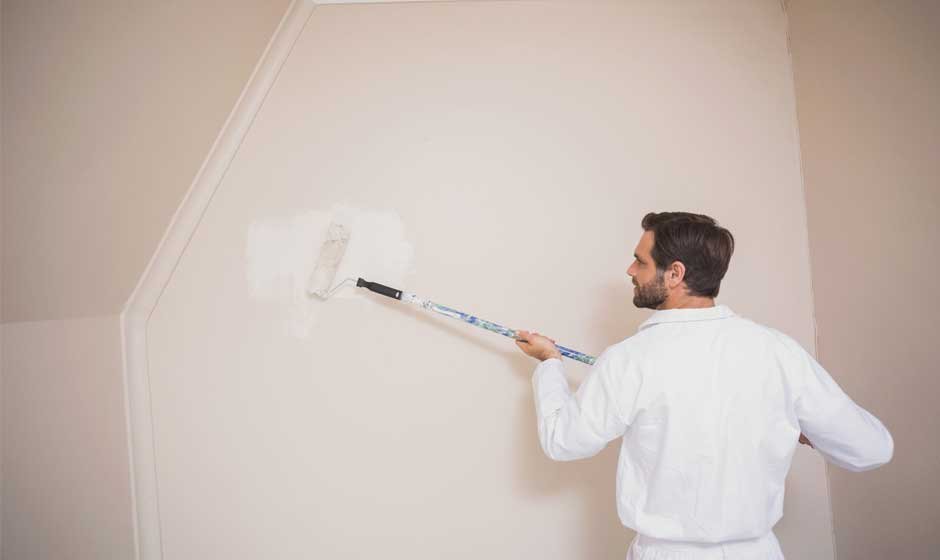When you invest in freshly painted walls or surfaces, preserving that fresh and vibrant look becomes a priority. A well-done paint job can transform your living space, boosting appeal and comfort. Yet, without proper maintenance, even the most carefully applied paint can begin to show signs of wear sooner than expected. Maintaining newly painted surfaces requires a thoughtful approach to cleaning, protecting, and caring for the area. We will explore practical and effective ways to ensure your paint remains attractive and durable long after the painters have finished their work.
Practical Steps to Care for Your Newly Painted Surfaces
Allow Proper Drying and Curing Time Before Use
One of the most important steps to protect your newly painted surfaces is to respect the drying and curing period recommended by the paint manufacturer or your professional painting company in Oakland, MI. While paint may feel dry to the touch within a few hours, full curing can take several days or weeks, depending on the type of paint and environmental conditions. Avoid touching, leaning objects against, or cleaning the painted walls during this time. Premature contact can cause smudges, dents, or peeling, which could necessitate touch-ups. Keeping windows open to encourage air circulation helps accelerate drying, but be cautious about dust and dirt settling on the wet paint. Giving your walls ample time to cure allows the paint to form a strong bond to the surface, making it more resistant to damage later.
Regular Cleaning Using Gentle Methods
Regular cleaning becomes essential to preserve its appearance once the paint has fully dried and cured. However, cleaning painted surfaces requires gentle care to avoid scratching or stripping the finish. Use soft cloths or sponges dampened with mild soapy water to wipe away dust, fingerprints, or minor stains. Avoid harsh chemicals, abrasive scrubbers, or stiff brushes, as these can damage the paint’s surface. For stubborn marks, test a small inconspicuous area first before proceeding. Pay particular attention to areas prone to dirt buildup, such as around light switches, door frames, and kitchen walls. Regular dusting and light cleaning keep the walls looking fresh and prevent the accumulation of grime that can dull the paint over time.
Protect Painted Surfaces from Physical Damage
Preventing physical damage is crucial for maintaining your newly painted walls and surfaces. Be mindful when moving furniture or heavy objects near painted areas to avoid accidental scratches or dents. Using furniture pads or protective covers can help minimize contact with walls. Consider adding protective elements like chair rails or wainscoting to guard the paint from impact and wear in high-traffic zones such as hallways or staircases. In kitchens and bathrooms where moisture and heat are common, installing splash guards or using heat-resistant paint can add an extra layer of protection. Taking preventive steps reduces the risk of damage that can undermine the paint’s integrity and lead to costly repairs or repainting.
Maintain Appropriate Indoor Conditions
The indoor environment plays a significant role in the longevity of your paint job. Fluctuations in temperature and humidity can cause paint to expand, contract, or peel prematurely. Aim to moderate indoor humidity, particularly in moisture-prone rooms such as bathrooms or kitchens. Use exhaust fans or dehumidifiers to control dampness, especially after cooking or showering. Avoid exposing painted surfaces to direct sunlight for extended periods, as UV rays can fade colors and weaken paint films. Using curtains, blinds, or UV-protective window films can help minimize sun damage. Consistent indoor conditions protect your paint and improve overall comfort and air quality in your home.
Schedule Periodic Inspections and Touch-Ups
Even with careful maintenance, painted surfaces may develop minor flaws such as small chips, cracks, or discoloration over time. Conducting regular inspections allows you to identify these issues early before they worsen. Make it a habit to walk through your home every few months to check walls and painted trim for signs of wear. Small imperfections can often be repaired with simple touch-ups, which help maintain a uniform and polished look. Keep a small amount of leftover paint from your original job handy for such touch-ups, or consult your painting company if you need additional matching paint. Timely attention to minor repairs preserves the overall appearance and prevents the need for extensive repainting.
Handle Stains and Marks Promptly
Accidents happen, and stains on newly painted walls are not uncommon, especially in homes with children or pets. Addressing stains quickly improves the chances of removing them without damaging the paint. Blot the stain gently with a clean, damp cloth rather than rubbing it, which can spread the stain or wear down the paint. For grease or oil marks, use a mild detergent mixed with water. Avoid bleach or strong solvents that can discolor or strip paint. For crayon, marker, or ink stains, specialized cleaners formulated for painted surfaces can be effective, but always test a small hidden spot first. Prompt stain removal keeps painted surfaces looking fresh and extends their lifespan.
Maintaining freshly painted surfaces after hiring a painting company is an ongoing process that requires patience and thoughtful care. From allowing proper drying time and cleaning gently to protecting surfaces from damage and moisture, each step contributes to the longevity and beauty of your paint job. By incorporating these maintenance practices into your routine, you can enjoy the renewed vibrancy of your home’s walls for years to come. Proper care preserves the aesthetic appeal and safeguards your investment in quality workmanship, ensuring your space remains welcoming and well-kept.










